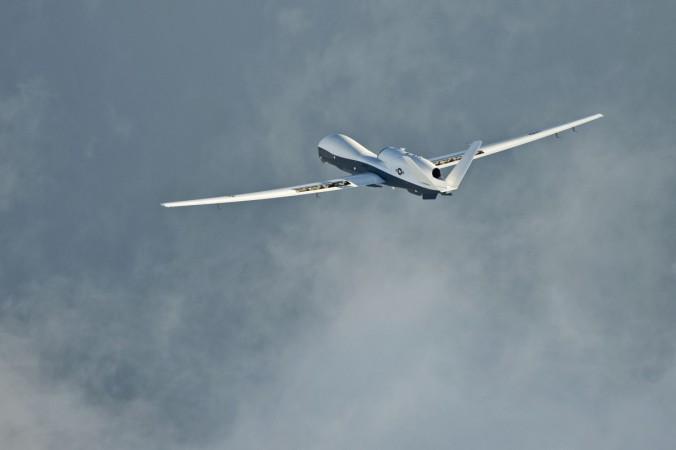
"In modern warfare, it is not the size of your army, but the speed of your machines, the sharpness of your code, and the foresight about the dynamic, complex and emerging battle scenarios that defines power."
On July 27, global defense and technology circles turned their gaze toward India as reports emerged of an impending $35 million deal between the Indian Air Force (IAF) and US-based autonomous drone manufacturer Shield AI. Yet, behind this seemingly modest figure lies a tectonic shift: the broader plan could reach billions in cumulative value, with long-term cooperation, domestic manufacturing, and force restructuring on the horizon. The move signals India's clear intent to transition from legacy command paradigms into machine-speed warfare, reshaping its security calculus across the Indo-Pacific.
This is not just a drone deal. This is a declaration.
The Strategic Why: What Makes the V-BAT a Game-Changer
The V-BAT by Shield AI is not just another UAV. It is a next-generation Vertical Take-Off and Landing (VTOL) drone designed for front-line battlefield intelligence, surveillance, and reconnaissance (ISR) missions. Deployed from confined spaces without runways and capable of autonomous navigation powered by AI-driven mission autonomy, it is engineered for contested environments urban warfare, rough terrain, and naval decks alike.
Its 1.5-meter wingspan conceals significant punch: endurance of over 8 hours, operational altitude up to 15,000 feet, and a capacity to carry both ISR and strike payloads. Its integration of Hivemind AI software, already tested in live combat by US forces, marks a leap toward fully autonomous combat decision-making.
"Whoever dominates autonomous aerial systems will dominate 21st-century conflict," says Brandon Tseng, former Navy SEAL and President of Shield AI.
From Import to Integration: India's Atmanirbhar Leap
Unlike past deals where India remained a buyer of technology, the V-BAT project includes provisions for domestic production, likely through a joint venture between Shield AI and JSW Defence. This will bring critical technologies and know-how into India's growing defense industrial base, aligned with the government's Atmanirbhar Bharat (Self-Reliant India) vision.
The potential of a domestic production line transforms this from a tactical procurement to a strategic industrial capability, one that mirrors global best practices like the US-Japan F-35 co-production and the Turkish Bayraktar industrial model.
"This is how technology transfer should work co-development, not hand-me-downs," a senior MoD official reportedly remarked.
The Warfare Context: Ukraine, Gaza, and the Case for Smart Drones
From the Donbas trenches to Gaza's labyrinthine corridors, the nature of combat has changed. In Ukraine, cheap FPV drones with onboard AI are used to deliver munitions with chilling precision. In Gaza, swarms of quadcopters conduct reconnaissance over alleys. In Syria and Lebanon, Iranian proxies leverage drones to bypass radar and deliver asymmetric damage.
India has learned. In the 2023 Kashmir skirmishes, Pakistani quadcopters dropped supplies across the LoC undetected. In response, India began integrating drone detection grids and rapid counter-drone protocols. But merely defending is no longer enough.
"You cannot fight tomorrow's war with yesterday's tools," noted General Bipin Rawat in 2019. That future is already here.
Regional Edge: Keeping Pace with China and Pakistan
China's Wing Loong and CH-5 drones are being exported en masse to Pakistan, UAE, and North Africa. Pakistan, in turn, has begun local assembly of Turkish Bayraktar TB2-like variants with Chinese support. India cannot afford a reactive posture.
The V-BAT initiative is not about matching drones with drones it's about building superior AI-enabled autonomy, a layer deeper than hardware alone. Shield AI's combat-proven software stack and operational data from missions in the Middle East and Africa give India a critical edge in replicating mission profiles autonomously, even in GPS-denied or EW-jammed environments.
What Changes in Indian Warfare Doctrine
This deal marks a paradigm shift in Indian military thinking from a platform-centric approach to a systems-centric and decision-loop shrinking model. The ability to deploy swarming ISR drones, autonomously surveilling high-altitude zones like Eastern Ladakh or Arunachal Pradesh, will be critical against a PLA-style multi-domain battle doctrine.
These drones can operate independently, deliver reconnaissance in real-time, and queue kinetic assets like artillery, loitering munitions, or fighter jets. They are the eyes and ears of future command centers.
"India is finally embracing the speed of war," observed a RAND Corporation analyst commenting on the V-BAT development.
The Billion-Dollar Vision: Scaling the Deal
Though the initial procurement is estimated at $35 million, defense analysts suggest the full-scale integration spanning production, training, maintenance, and deployment across all three services could easily grow to $2-3 billion over the next 6-8 years.
This includes:
- Indigenous manufacturing via Shield AI-JSW Defence joint venture
- Software customization for Indian combat theaters
- Drone integration into Indian Navy's carrier groups and Army's forward posts
- Mid-air refueling drone support and swarm coordination AI labs
- The vision is expansive, and the financials reflect that.
- Geopolitical Signaling: India-US Tech Ties and Indo-Pacific Posture
This deal also fits squarely into the broader canvas of India-US tech-defense cooperation. Post-iCET (Initiative on Critical and Emerging Technology), the emphasis has been on co-development and co-production rather than traditional buyer-seller dynamics.
For Washington, it's a win showcasing how a US ally can counter Chinese tech encroachment through trusted partnerships. For India, it reflects new comfort in embracing dual-use AI, signaling to Beijing that India is no longer technologically tethered.
Human Element: From Soldier to System-Orchestrator
As India modernizes its force, the role of the soldier is evolving. V-BATs and similar systems will require a new cadre of operators part drone pilot, part data analyst, part EW strategist. This opens up new verticals in defense skilling, veteran reskilling, and AI-military integration.
"The soldier of tomorrow is not just a shooter but a networked strategist plugged into machine speed," says a DRDO veteran now leading drone training programs.
India's Imperatives: The Future is Autonomous, Fast, and Layered
The V-BAT deal is not the end; it's the threshold of a new era. India's defense modernization must now prioritize:
1. AI-First War Doctrine
Every layer of battle must be optimized by real-time decisioning be it border surveillance, target acquisition, or kinetic operations.
2. Integrated Battlefield Command Platforms
Human-machine teaming must become doctrine, not experimentation.
3. Rapid Domestic Scaling
With JSW Defence and DRDO involvement, India must move toward producing hundreds of indigenous V-BAT variants yearly.
4. Legal and Ethical Frameworks
India must prepare laws and protocols for autonomous weapons, especially for defensive vs. offensive use.
A Nation at Strategic Inflection
The India-Shield AI V-BAT deal is a pivotal moment in South Asia's defense narrative. It combines vision, tech, doctrine, and industrial transformation. In an age when wars are increasingly won before the first shot is fired, it is not just the strength of your missile but the speed of your mind and machine that matters.
India has taken a significant step, not just to keep pace, but to lead the shift toward AI-enabled warfare.
"The side that uses AI better will win. And India is now in that race, fully armed with foresight."
[Major General Dr. Dilawar Singh, IAV, is a distinguished strategist having held senior positions in technology, defence, and corporate governance. He serves on global boards and advises on leadership, emerging technologies, and strategic affairs, with a focus on aligning India's interests in the evolving global technological order.]

















